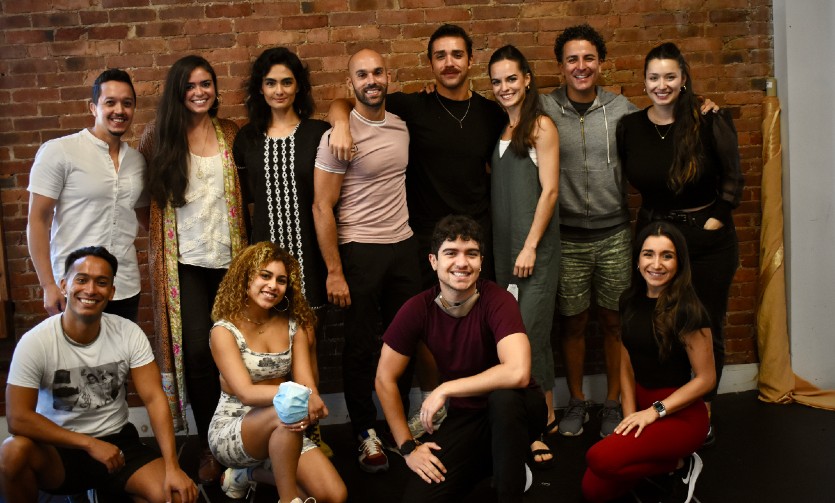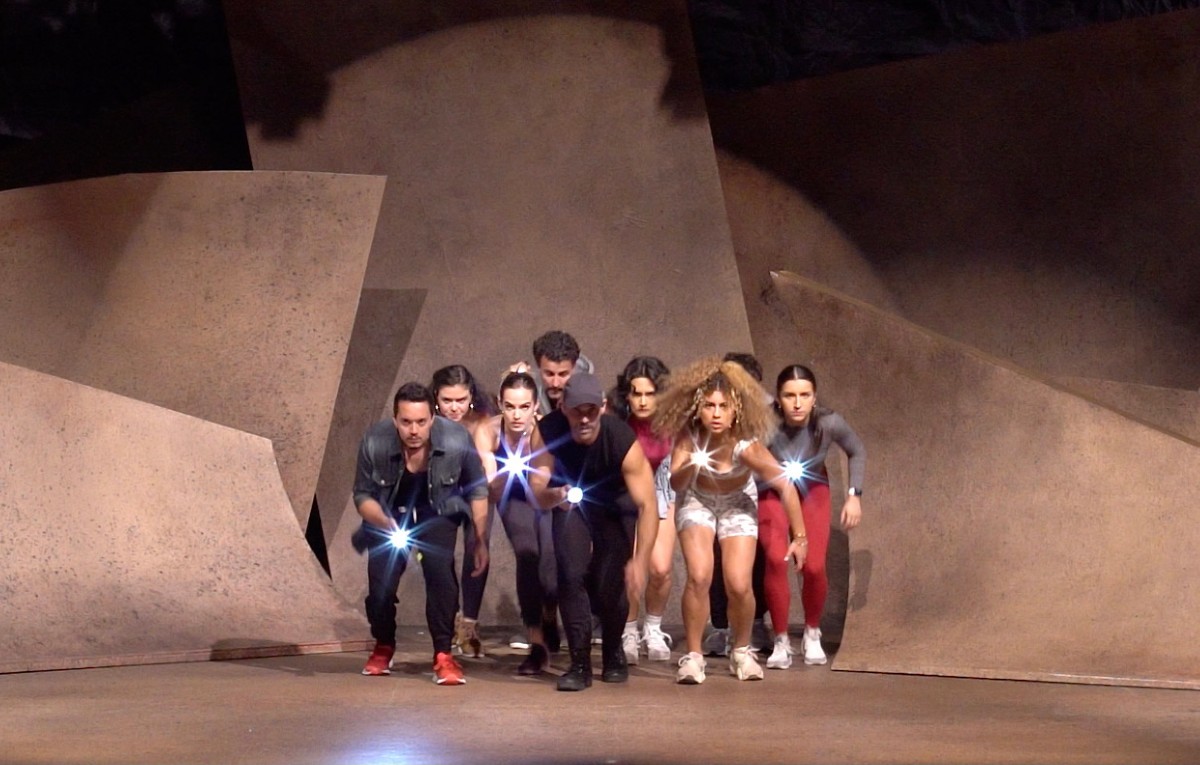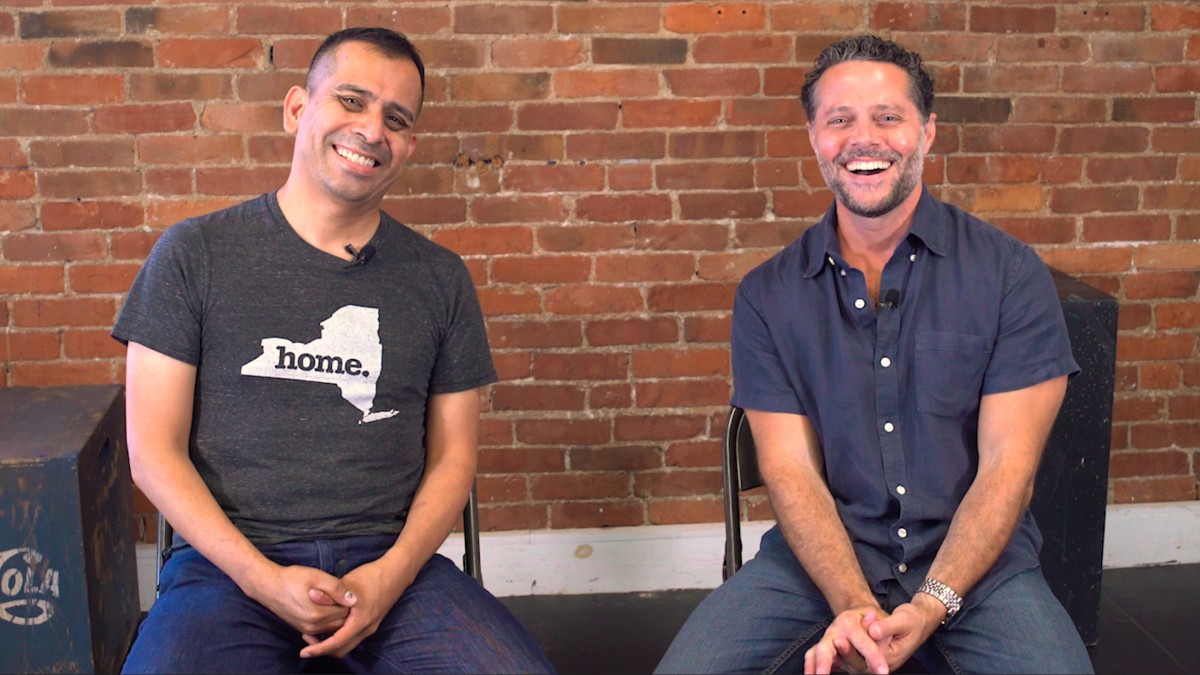"A Crossing” At Barrington Stage, A World Premiere Musical For Our Time
Told through song and dance, a group of migrants brave the dangers of crossing the southern border.

Told through song and dance, a group of migrants brave the dangers of crossing the southern border.

Photos courtesy Barrington Stage Co.
Barrington Stage Company has an uncanny knack for producing works that are exquisitely in tune with what’s happening at the moment. And more than a few of its original productions have landed on Broadway. While I profess no talent for prognostication, I do know that its world premiere musical, “A Crossing, a Dance Musical,” will garner at least the first of those attributes. Told in dance and song, “A Crossing” is the story about a group of migrants braving the dangers as they cross the southern border into the United States. The work will be presented at the Boyd-Quinson Stage in Pittsfield Sept. 23-Oct. 17.
Prepare to be moved. At a talkback following a rehearsal preview for press, the cast of dancers, actors and singers — all of Latin heritage — conveyed what it’s been like to be in a production about immigrants, and to come back to theater after a long hiatus with others (including many of the creators) who have similar personal stories. One by one, echoing “A Chorus Line” moment, each cast member described the importance of this work. “I feel like I’m embodying this story,” said one. “It’s meaningful to be part of a piece that has something to do with who I am,” said another.
The production has no spoken dialogue, as befitting the credentials of the one who dreamed it up. Joshua Bergasse, a Tony nominee and an Emmy Award-winning choreographer (for the NBC musical drama “SMASH;” he also choreographed BSC’s Broadway Bound “On the Town,” “The Pirates of Penzance” and others) is the director and choreographer, a first-generation American. In 2015, reflecting on the path of his immigrant parents, he began considering a work based on the plight of migrants on the southern border of the United States.

It would be told through dance and music, but it needed someone to draft a storyline. Enter Mark St. Germain, a renowned playwright responsible for some of BSC’s outstanding plays, including “Freud’s Last Session” (which shuffled off to Broadway), and “Becoming Dr. Ruth” (reprised off-Broadway). How do you write a script without words? “I had to visualize it silently, almost like writing a silent movie,” St. Germain said.
“We kept adding people to the team,” Bergasse said. “We needed a dance company. I was researching Mexican dance and found Calpulli Mexican Dance Company. I reached out to them.” On board came Calpulli’s artistic director Alberto Lopez to act as co-choreographer and story consultant. Zoe Sarnak wrote the original songs, and George Sáenz orchestrated the music and created the traditional Mexican folk song arrangements.
“The story line is told through dance, a fusion of folklorico traditions,” said Lopez. “It’s sometimes ballet, sometimes contemporary.”
We meet the migrants as they appear against a movable backdrop representing the mountains and desert they must traverse as they describe, in movement and song, “The Invisible Line” that is their goal. Courage and fear are their twin conditions, conveyed brilliantly through the lyrics, choreography and elements of Mexican folk music.
In one of the pieces previewed at the rehearsal, “The Cave,” the group, led by the coyote — a human smuggler — encounter an Aztec god as they wend their way through the tunnel. The migrants whirl around, shining their flashlights on him as he performs an indigenous dance to a rhythmic drum solo accompanied by the percussion of the seed rattles on his ankles. Is he a protective spirit? An ancestor leading the way, or warning of possible danger ahead?
Having heard the cast members express their gratitude for the creation of — and their participation in — a new, particularly meaningful dance musical adds poignance to “A Crossing.” But you don’t need to have heard them speak so fervently to understand the relevance and the emotional intensity of this work. It’s the story of immigrants from anywhere and any time period.
“We don’t want to change any minds, but at the same time, we want to show people the truth of what’s happening at the border,” said Lopez.
Added Bergasse,“Our goal is to humanize these characters. We want to explore why they’re making the journey, and what they hope to find.”
What the audience will find: an unspoken, but powerfully danced and sung odyssey.

